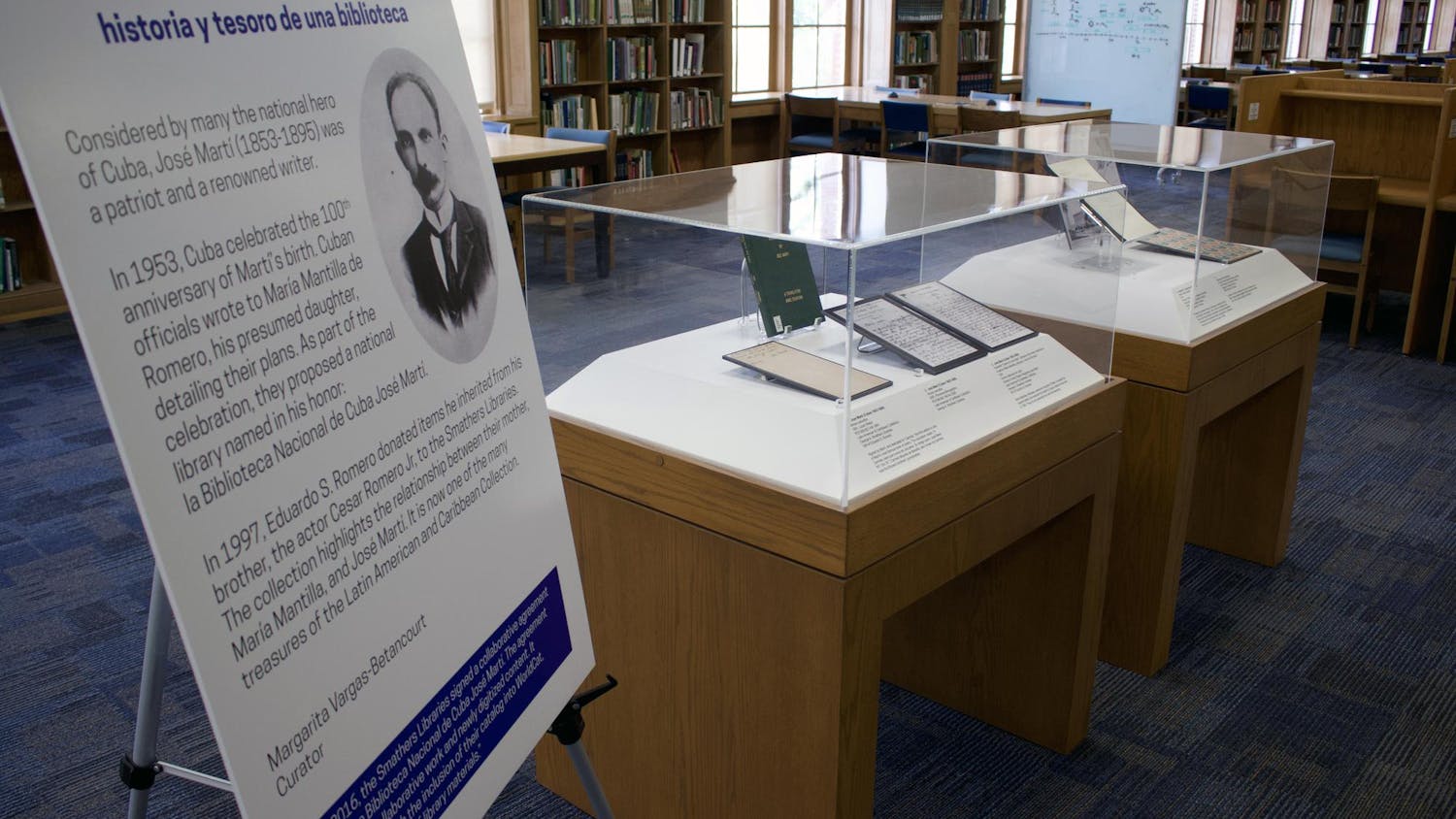In 1931, members of Florida Blue Key held a meeting to determine a new name for the Homecoming celebration, which was known until then as “Dad’s Day.”
After failing to come up with a new name, an agitated member mentioned letting a “gator growl,” and the pep rally was named.
Since then, Gator Growl, recognized as the country’s largest student-produced pep rally, has become a sensation. It has attracted big name comedians such as Bill Cosby and Robin Williams, and its name has been put up in lights on shows like “Jeopardy!” and “The Daily Show.”
“Obviously, it’s a huge part of tradition here,” said university spokesman Steve Orlando. “It’s a great opportunity for students and alums to get together and have a good time together. I think that’s the aim.”
Gator Growl has come a long way since the days when cheerleaders and marching bands were the sole performers. This year’s show will feature a triple-projector system that will utilize the entire football field as its screen.
According to UF historian Carl Van Ness, Homecoming has been celebrated since 1916. However, there was no Growl-like event until 1923, when Dad’s Day was started.
When the pep rally was created, UF was still a men-only university, and Homecoming was celebrated with students and their dads.
Back when the show first started, no bands or comedians performed.
Instead, entertainment came in the form of student skits, marching bands and cheerleading performances.
In 1936, the sound system cost $7.50, security cost $2 and the defective fireworks cost $25.
In 2010, the show has a $1.5 million budget.
But as the event — and technology — evolved, the need for bigger and better things acts became more urgent.
Bob Hope became the first nationally recognized comedian to perform at Gator Growl in 1976. The light shows and performances became a point of emphasis during the 1980s, Van Ness said.
The challenge for the show’s producers is to come up with acts that will please not only students, but alumni as well.
Orlando recalled an incident in 1982 when Robin Williams was brought in as the entertainment. Williams’ raunchy act was funny to students but not to the alumni, causing a controversy, he said.
The following year, Bob Hope was brought back to perform for a third time to bring back family-friendly entertainment, he said.
“I do not envy the people that have to pick the talent because it’s not easy to find someone who pleases everybody,” Orlando said.
Producer Mike Shapiro said that is the toughest part of his job.
“We worry about making sure a Gator fan is happy,” he said. “Doesn’t matter whether they’re 80 years old or 12 years old or a newborn.”
The factors affecting talent selection include the artist’s tour schedule and asking price, which can rule out certain acts.
Show producers threw around ideas for acts such as the Black Eyed Peas and the cast of “Glee,” but they did not work out, Shapiro said.
Gator Growl is going bandless for the first time since 2006.
Guest celebrity cameos played between skits and performances have also become an integral feature of the rally.
Presidential candidates Barack Obama and John McCain lit up the screen with their Gator chomps in 2008.
Usually, the cameos are obtained because people at the university have connections to certain celebrities, Shapiro said.
“The fact that a person that is now a president and someone who was a presidential candidate wanted to be on Ben Hill’s Jumbotron just goes to show how important and large-in-scope the event is,” Shapiro said.
Gator Growl has served as a model for other universities’ pep rallies as well.
In 1995, Oklahoma State University sent representatives to Gator Growl, according to Kent Sampson, OSU director of student life. When they returned, they created their own version of the pep rally, called Orange Peel.
But despite the elaborate light shows, high-profile entertainment and far reaching impact, Shapiro made it clear that Gator Growl is still ultimately the same thing it has been since 1932.
“At its heart, Gator Growl is a pep rally,” he said. “The goal is to give a Gator fan, no matter the age, entertainment for two-and-a-half hours.”




